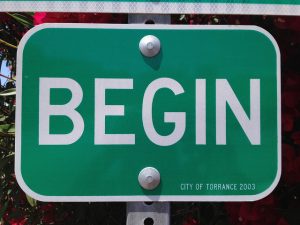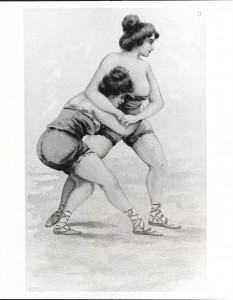Posts by Margaret Dilloway
This was a difficult post for me to write. I stopped and started at least five times. I was going to post about something much lighter. Why was this so hard for me to get out?
Because I fear I don’t have a real answer.
The news is full of unrelenting turmoil and bad news. In my social media feeds lately, I’ve seen a ton of writers despairing about the current state of the world.
Many of the sentiments boil down to this:
How can we do something frivolous like write books when what we need right now is concrete action? I’m too depressed to write.
I’m not entirely sure myself how to write while the world seems to be turning into ashes around me. So first, I read some essays. I turned to greats like Toni Morrison. If you haven’t yet, I recommend you read “No Place for Self-Pity, No Room for Fear.” Though it was written in 2015, it is utterly prescient. Here she describes how despots work:
Select a useful enemy—an “Other”—to convert rage into conflict, even war.
Limit or erase the imagination that art provides, as well as the critical thinking of scholars and journalists.
Distract with toys, dreams of loot, and themes of superior religion or defiant national pride that enshrine past hurts and humiliations.
Sound familiar?
It’s important, Morrison points out, to remember other writers from history who wrote under much more difficult situations. Through jail and torture, threatened with death and exile, writers have insisted on making sure their voices are heard.
Vision of the Truth
Next, I read a speech JFK gave at Amherst, honoring Robert Frost and the arts. In part:
Read MoreI’ve lost count of how many times I’ve gotten the note: “Make your character less difficult. She’s not likable enough.” I didn’t do it on purpose; it’s just that my female characters tend to be complex, like the women I know. It happened when the female leads were opinionated. They had standards and held fast to them. They want. They railed against those who got in their way.
They were not compliant.
There aren’t that many female characters in literature or TV that can be considered difficult. Check out this list of unlikable characters from literature. There are female characters on there, yes, but the only female on it is Bella Swan of Twilight (a box I’d rather not open on this particular post).
Male characters with those difficult attributes are generally embraced by the public. Think Sherlock Holmes. A Man Called Ove. House. Sheldon Cooper. Nobody would ever call them compliant, yet they are beloved. Even those who may not be beloved (Dexter, Don Draper, Walter White) are still pretty darn popular.
What’s the Explanation?
Unlikable female main characters only seem to inhabit a limited number of genres. If you’re writing women’s fiction and not a thriller or literary fiction, you’re likely to find resistance with an unlikable female lead. Why is that? An editor might tell you that an unlikable female character won’t engage the average reader, and therefore not sell books. Upmarket fiction is a blend of literary and commercial: think generally the type of novel with a theme meaty enough for book clubs and enough plot to keep the average reader engaged. In this genre, I would bet that most female characters are likable.
Non-compliant women threaten to overturn our social norms. My guess is because although American society has made great inroads since women got the vote, it still hasn’t been all that long since women were considered property. Even those who consider themselves feminists are not always completely able to shake free of sexism. We don’t like it when women defy social norms. Celeste Ng’s terrific Little Fires Everywhere explores in part how the bourgeoise take down those women who defy unwritten cultural rules, fearing that their own lives will be called into question.
Also think of Elizabeth Strout’s character Olive Kitteridge. Nobody could call Olive likable. She’s thorny, with standards that others find it impossible to live up to. She messes up her relationships. And she doesn’t care what others think. Essays have been written about her unlikability. Same with Claire Messud’s Nora in The Woman Upstairs. Messud told Publisher’s Weekly, “If you’re reading to find friends, you’re in deep trouble. We read to find life, in all its possibilities. The relevant question isn’t ‘is this a potential friend for me?’ but ‘is this character alive?’”
Should Your Main Character Be Likable?
That’s up to you. Perhaps an unlikable narrator is just not right for your story. Or perhaps you’ve written a deliciously non-compliant difficult woman for a thriller, and you want to keep her that way. Whether or not your character is likable in the traditional sense, their actions must be borne out of a grounded place. And of course, even if your character’s unlikable, they must still be interesting.
But […]
Read MoreBanksy in Boston: FOLLOW YOUR DREAMS CANCELLED, Essex St, Chinatown, Boston, photo by Chris Devers
My husband and I have been watching Project Runway this season. We have our favorite designers and our least favorite ones. Near the beginning of the season, the one we were betting against the most was this young man named Brandon who designed only menswear before the show.
In the first challenge, he’d been assigned a beautiful plus-sized model and tasked with creating a red carpet look for her, and he was very nervous about doing the look right. He decided to make an outfit with a cropped camouflage top and a pink bottom with an athletic stripe.
Throughout the episode, the young man expressed doubts about his ability. His model was worried. Some of the other designers thought his work was hideous. We pretty much agreed with them.
At the end, as you probably know, the designers with the highest and lowest scores stay onstage to be judged. Brandon was among them. We of course thought he had a low score, and would immediately be eliminated.
Read MoreOne of the best things I’ve done for myself as a writer and speaker is study improv. Not stand-up comedy—think of the short-form improv show Whose Line Is It Anyway? There’s also another kind, long-form, that I’ve studied this year. Long-form improv particularly lends itself well to novel writing as it deals in characters, relationships, and scenes. Any form of improv will help your writing, though, because of the specific way it forces your brain to work. Why is that?
Saying Yes
The first thing you learn in improv is that you always say, “Yes, and…” You are not allowed to say no to ideas. You agree to the idea and add onto it.
Imagine you step on stage and you’re thinking you’re going to be an astronaut on Mars. But another person steps on to be your scene partner and tells you that you’re a cowboy on a ranch. You don’t say, “No, we’re actually on Mars, duh.” You change gears and accept their idea, then add your own. “Yes, and we’ve been stranded here for thirty years!”
How often do we “say yes” while we write? Too often, we censor ourselves. “Got to stick to my outline!” we mutter during the first draft. “That’s no good. I suck. This is terrible!” I’m sure we’ve all had those feelings as we try to pound out some words onto a blank screen.
Instead, trust your subconscious mind. Say “yes, and…” and let yourself take the risk. Write what comes to mind without censoring yourself. Let your mind build on your first idea, and keep adding.
But how do you flex that subconscious mind muscle so it becomes second nature? How do you “get out of your head” and stop doubting yourself?
Read More
Last month, I spoke at T. Greenwood’s Novel Writing class at Grossmont College in El Cajon, CA. She asked me to talk about beginnings since that’s what the class was studying.
I thought about what I consider when I begin writing a book. Of course, there’s the important decision of where to start your story within the plot. But what about the micro-beginning, like a first line? I pulled out my books and looked at all my first sentences, wondering if I could find a common thread. I could see one among the women’s fiction.
“I had always been a disobedient girl.” (How to Be an American Housewife)
“For a moment, I think I have made a mistake.” (The Care and Handling of Roses with Thorns)
“People in my family are pathologically incapable of asking anyone for help.” Sisters of Heart and Snow (after the prologue)
Each first line somehow encapsulates the character and the theme of the book. I had never thought about that too hard before. It seemed to be something I did without thinking about it.
I looked at my kids’ fantasy book Momotaro: Xander and the Lost Island of Monsters next.
“I shuffle through my notes once, twice, three times, feeling sweat starting to trickle down my sides and from my palms.”
I suppose that first line could be construed as a theme, since the main character spends much of the book being nervous, but I’d also consider that to be a stretch of the imagination. It’s just more descriptive.
Now I was curious. Do other authors have a first sentence like the one I’d noticed? Was I a one-off? I pulled some random books off my shelf to look at their first lines.
Read MoreLast year, I confided in a former colleague that I was thinking of getting a regular job instead of writing full-time. See, I’d taught creative writing part-time at a middle school, and I liked many aspects of having a job outside the house.
They expressed that I’d burst their bubble about the writing life. Wouldn’t that be giving up? At this, I felt slightly ashamed, as if going back to work would indeed equal throwing up the white flag. Indeed, at other times, people have asked if writing’s the “only thing I do.” When I reply yes, they give an approving cluck and say something like, “Good for you.” But the truth is, I’ve only really been able to write because my husband works and is willing to support us—every writing check I’ve earned has gone to some put-off familial necessity.
This notion of writing full-time is usually seen as the Holy Grail for those fantasizing about publishing. If you give up your day job, the myth goes, you have it made. Yet I find myself having a lot of hours to fill once I’m done with my work. And giving an anxiety-prone writer too much free time can be bad. Some people, like Border Collies, need to keep their hours filled. If you leave a Border Collie home alone with nothing to do, expect a (proverbial) couch to get shredded.
Read MoreMiddle grade voice is considered one of the most difficult for a writer to get right. Maybe it’s because it’s been a fair amount of time for most of us since we were a middle grade reader ourselves. But short of time-traveling back to that period, there are things writers can do to make sure their middle grade voice is authentic.
Read More
As writers, we’re all used to receiving criticism about our work, from our beta readers, agents, and editors. We’re accustomed to reading one-star reviews online. But what about criticism served directly to your face? How do you respond?
Here are some scenarios that have happened to me and/or writer friends (some details changed to protect the guilty).
My mother always told me not to brag. Whether this was a Japanese trait or her unique dislike, I do not know. But I do know she did not want me to draw the attention or jealousy of others. To be humble. Nonetheless, she urged me to “ichiban” (number one) anyway, albeit secretly.
This is a hard line to walk. If you get into a mindset that you should not tout your accomplishments at all, it’s easy to then think that perhaps your skills aren’t as good as you thought. You can get sucked into what’s called “imposter syndrome.”
CalTech describes “imposter syndrome” thusly: “Impostor syndrome can be defined as a collection of feelings of inadequacy that persist even in face of information that indicates that the opposite is true. It is experienced internally as chronic self-doubt, and feelings of intellectual fraudulence.”
I first caught this tendency in myself when someone asked me to teach a writing class several years ago. I declined. “What do I know?” I thought. I feared people would criticize me, say, “Get her out of here! She has no MFA. She’s only published two books so far, and they’re just women’s fiction! She’s not a real writer.”
Read MoreSchlesinger Library on the History of Women
Have you ever wanted to jump genres, just because?
When my son was in third grade, I had the hare-brained idea to pen a kid’s book. It would based on one of my favorite Japanese fairy tales, but set in contemporary San Diego. I didn’t let the fact I hadn’t written for kids before stop me. Nor had I written fantasy since approximately sixth grade. A fantasy book it had to be, though.
In the adult fiction world, there tends to be a perception that writing kid lit must be easy, because the books are generally shorter. And some purveyors of “serious lit” say that adults shouldn’t be reading kids’ books at all, much less, one would imagine, actually writing them. ( I’m here to say that both are utterly and completely false. If you have a problem with that, you can meet me in the sawdust pit at dawn to settle our differences). *
First I wanted to settle the small matter of the plot. I’d grown up a fan of all the usual suspects, your Narnias and your Prydains and your Meg Murrays and so on and so forth. Had I read widely in my kids’ more contemporary libraries? Of course, but there’s something about the books you read when you were a child that stick with your soul. I tried to remake my book into a model of one of those books from my childhood.
After a few drafts, I got it into what seemed like reasonable shape and showed it to my agent. There were interesting moments, yes, and some solid relationships. My agent sent it out to a few places and it got rejected. One place actually said it reminded her too much like A Wrinkle in Time. Another opined that it began too slowly (kids’ books these days are faster paced). And the final rejection from my ultimate dream editor, which was like a splintered chopstick in my heart, said she loved Japanese tales but she’d been hoping for more humor and action.
Read MorePlease welcome Margaret Dilloway as our newest WU contributor! Margaret is the author of three published novels (How to Be an American Housewife, The Care and Handling of Roses with Thorns, Sisters of Heart and Snow) and an upcoming middle grade fiction book (Momotaro Xander and the Lost Island of Monsters), and can often be found giving helpful advice in WU’s Facebook group. We’re thrilled to have her join us!
Sometimes everything we do seems to take on equal importance, like spotlights trained on every prop onstage when the lights should only be on the actors. And then some invisible hand wrests away control.
Last spring, I published my third women’s fiction novel. I was also working under contract on the second book of Momotaro, my middle grade fantasy series, the first of which publishes this year. Thus my days from spring on into summer were spent writing and obsessing about writing, and numbers and obsessing about numbers, and generally bemoaning all the writing things and fretting about what would happen next. You know. Typical writer stuff.
Then, in June, I visited a new cardiologist.
I should have known how it was going to turn out when I walked into the UCSD cardiology courtyard that day. Nice place, I thought, seeing the fountains and benches outside the brand-new facility. But this’ll be my last visit. It was the kind of foreshadowing that reality shows use, displaying footage of too-cocky contests bragging about how they’ll win, only to be immediately booted.
I’d been going to see a different cardiologist for a genetic condition called noncompaction cardiomyopathy for the past five years. It runs strong in my family; both of my siblings have it, and my mother and two of her sisters died from it. Basically, the heart walls are supposed to be smooth, but for us they’re spongy, which can lead to the muscle flabbily and ineffectively pumping. There is no cure, only management of symptoms. Symptoms range from none at all, to heart failure.
My old cardiologist had told me everything looked stable. To come in if I ever fainted.
This new cardiologist conducts research into the condition, a relatively newly discovered thing. He has about a dozen patients with the disease. As such, he’s more experienced and proactive. The monitor I’d worn, he told me, had revealed a run of ventricular tachycardia. Too many of those and you can go into cardiac arrest and die.
The solution was a pacemaker and defibrillator. Grim Reaper insurance. A mini-paramedic team accompanying you wherever you go.
As I listened to him talk, I felt all the emotions expected in such a big-stressful-news situation: panic, worry, sorrow. But underneath that, my pragmatic writer’s brain rubbed its hands together gleefully. “Damn. So this is how a doctor speaks when delivering news like this. I wonder when I can use it in a story?” We are buzzards, writers.
Over the next few months, my luck worsened. The two procedures I was originally supposed to have—the pacemaker/ICD and an ablation—turned into four as complications arose. The last was the worst, a week-long emergency hospitalization to correct a dissected femoral artery and blood clot, with six weeks’ recovery afterward.
During those months, I realized a few things about writing.
Read MorePlease welcome returning guest author Margaret Dilloway to Writer Unboxed today! Margaret is the author of Sisters of Heart and Snow, releasing TODAY! It’s a story about two estranged sisters who are inspired and brought together by reading the history of real-life 12th century samurai woman Tomoe Gozen. Said Booklist of the novel:
Spanning centuries, Dilloway’s intricate, multigenerational saga of repressive family dynamics offers a timeless look at the bonds of sisterhood.
Margaret is also the author of the middle grade fantasy novel Momotaro (Disney-Hyperion, 2016), as well as The Care and Handling of Roses with Thorns and How to Be an American Housewife. She lives in San Diego with her three children, husband, and her personal trainer, a big Goldendoodle named Gatsby.
You can follow Margaret on her blog, on Facebook, and on Twitter.
The Stomach-Churning, Lump-o’-Coal Fearing Path to Publication Day
Today I await the publication of my third book, Sisters of Heart and Snow, with a mix of pleasant anticipation and stomach-churning dread. A mix like it’s about to be Christmas morning and I’m hoping there will be a few brightly wrapped packages, but suspecting that there might just be fat lumps of coal waiting for me, too.
Why coal? As a writer, you work for years on a project, not knowing if it’ll ever be published. Dozens of drafts later, it’s finally good enough for a non-relative to read. By the time it’s out on bookstore shelves, it’s been parsed dozens of times—by your agent, your editor, the editorial board, the foreign rights agents, copy editors, sales and marketing and design teams. And since none of these professionals has called up the president of the publishing company during the year or two the book’s been in production to tell him stop the presses because you’re a horrible hack, you ought to be golden with confidence by the time readers actually get their hands on it. Right?
Nope! We still feel as vulnerable as newborn kittens, our eyes closed, handing off our book babies from the warmth of our fuzzy blankets out into the cold world. Its eyes are still closed! Be gentle.
So what is this coal I speak of? It’s the people who give you one-star reviews. It’s the cold journal review that tells you all the things you could have done better—and yes, maybe a couple of the points are correct, but there’s nothing you can do about them now. It’s easy to be run over by the great freight train of anxiety, to worry over each tidbit as relentlessly as my dog chews his rawhide, down to a dangerous choking nub.
I don’t much like this feeling.
To prepare for the Big Day, I’ve been compiling a list for how to deal with this negativity, asking other authors how they do it. Here are some ways to cope with the coal:
Read More
Today, we’re thrilled to have Margaret Dilloway with us. She’s the author of the upcoming novel, SISTERS OF HEART AND SNOW, (Putnam, April 2015) about two estranged sisters who are inspired and brought together by reading the history of real-life 12th century samurai woman named Tomoe Gozen. She is also the author of the middle grade fantasy novel MOMOTARO (Disney-Hyperion, 2016), as well as THE CARE AND HANDLING OF ROSES WITH THORNS and HOW TO BE AN AMERICAN HOUSEWIFE.
Publisher’s Weekly has this to say about How to Be an American Housewife:
Follow Margaret on her blog, on Facebook, and on Twitter.
For the typical introverted writer, the hardest aspect of the job (besides, you know, actually writing and getting published) is networking. Yes, you have to network in your writing job exactly as you do at any other job. Establish relationships, form friendships, and help each other out.
But this means you have to pop up out of your dark little hidey hole and actually talk to people. (Or at least talk online). Everyone has to do it, because every writer at some point will need help from other writers in the form of blurbs, advice, cross posts, or getting the home address of a new agent (kidding).
Unfortunately, nobody writes the unspoken Rules of Networking down for anyone, so either you’re naturally good at it, or you have to observe and enact the secret customs, or you’re terrible at it.
Now that I’ve crossed the bridge to the other side and become a published writer, I’ve kind of gotten to know some of these unwritten rules. And now I’m on the receiving end of strangers asking me for favors out of the blue. I thought it would be helpful to write some of these rules down. Say them aloud. Discuss them.
The most important thing to remember when you approach another writer is that you want the other writer to feel respected. Ever used that dating app, Tinder? On Tinder, if you express an interest in someone who’s already expressed an interest in you, you can send each other messages. (Disclaimer: I’m not on Tinder. I swear). You might get a message saying, “Hey, beautiful, I want to spank you, meet me at my apartment in 30.” If you’re looking for a long-term mutually respectful relationship, then that message will be a turn off.
Same thing with networking. You want to approach someone with the intent to have a long-term mutually respectful relationship, not with the goal of using them for your means, then discarding them. I mean, take me on a […]
Read More



















